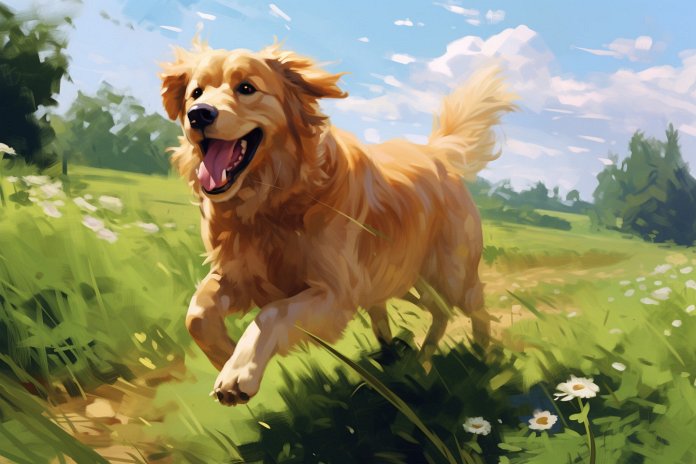
Dogs have heightened senses that humans don’t, including the ability to sense changes in barometric pressure and detect weather patterns. While dogs can’t communicate their findings to us directly, they do exhibit certain signs to let us know that something is off. In this article, we’ll explore these signs and how to interpret them.
Signs Your Dog is Sensing a Shift in Barometric Pressure
Dogs have a more heightened sense of barometric pressure than humans, so they can sense if adverse weather is approaching. When your dog detects a shift in barometric pressure, they may exhibit changes in behavior, such as becoming agitated, anxious, or fearful. They may also experience physical changes, like joint discomfort or nasal congestion.
In addition, dogs may become antsy or frantic and try to herd their family members into safe areas. Pay attention to these signs and have strategies to calm your dog down.
Body Language
Your dog may also display certain body language cues to indicate a change in barometric pressure. These include growling, being alert, barking, guarding, cowering, panting, howling, pacing, and having their back hair raised.
Other Signs
There are other signs your dog might exhibit to indicate a shift in barometric pressure, such as anxiety and panic, sniffing the air, sinus issues, seeking shelter, herding behaviors, and joint pain.
Historic Causes of Barometric Pressure Changes
Barometric pressure changes are caused by atmospheric changes, like air temperature, wind speed, and cloud formations. Stormy weather can cause a drop in pressure, while fair weather generally leads to a rising pressure. Dogs are able to sense these changes and help us stay prepared for weather fluctuations.
The Science of Dogs Sensing Barometric Pressure
Dogs have heightened senses of smell and hearing, allowing them to detect changes in pressure and odor travel. When the pressure changes, odors behave differently, and dogs can pick up on these variations. It’s not a sixth sense, but rather the result of their scientific abilities.
How to Train Your Dog to Deal with Barometric Pressure Changes
Your dog’s ability to sense changes in barometric pressure can be helpful, but it may also lead to anxiety. To train your dog to handle these situations calmly, reward them for giving you warnings about the weather. Provide them with comforting items like toys or blankets and make sure they have a safe, comfortable crate to retreat to when they’re feeling nervous. If bad weather strikes and your dog becomes inconsolable, keep them indoors to prevent them from running away until they calm down.
“Train your dog to handle barometric pressure changes calmly and safely.”

Tips & Things to Know
1️⃣ Pay attention to your dog’s behavior: If your dog is exhibiting changes in behavior such as agitation, anxiety, fearfulness, or clinginess, it could be a sign that they are sensing a shift in barometric pressure and a change in weather is coming. Keep an eye out for these signs and have ways to calm your dog down if needed.
2️⃣ Watch for physical changes: Dogs may also experience physical changes such as joint discomfort, nasal congestion, or snotty noses when the barometric pressure starts to change. Be aware of these signs and provide any necessary support or comfort for your dog during these times.
3️⃣ Train your dog to handle barometric pressure changes: It is important to reward your dog for alerting you to weather changes and never punish them for their behavior. Provide them with toys, blankets, and a safe crate as a calming environment during times of anxiety. Keep your dog indoors during storms to ensure their safety and prevent them from running away.
Frequently Asked Questions, Answered ✅
1. How do dogs sense changes in barometric pressure and weather patterns?
– Dogs have heightened senses of smell and hearing, allowing them to detect changes in pressure and the way odors travel.
2. What are some signs that a dog is sensing a shift in barometric pressure?
– Dogs may exhibit changes in behavior, become agitated, anxious, or fearful. They may also experience physical discomfort in their joints and snout.
3. How can dog owners interpret their dog’s body language to recognize a change in barometric pressure?
– Some subtle cues include growling, alertness, barking, guarding, cowering, panting, howling, pacing, and the hair on their back standing on edge.
4. What are some other signs that a dog might exhibit when sensing a shift in barometric pressure?
– Dogs may show signs of anxiety and panic, sniff the air, have sinus issues, seek shelter, exhibit herding behaviors, and experience joint pain.
5. How can dog owners train their dogs to handle barometric pressure changes and stay calm?
– Owners should reward their dogs for alerting them to weather changes and provide them with comfort items such as toys and blankets. Creating a safe space like a crate can help dogs feel secure during anxious moments. During severe weather, it’s important to keep dogs indoors to prevent them from running away.